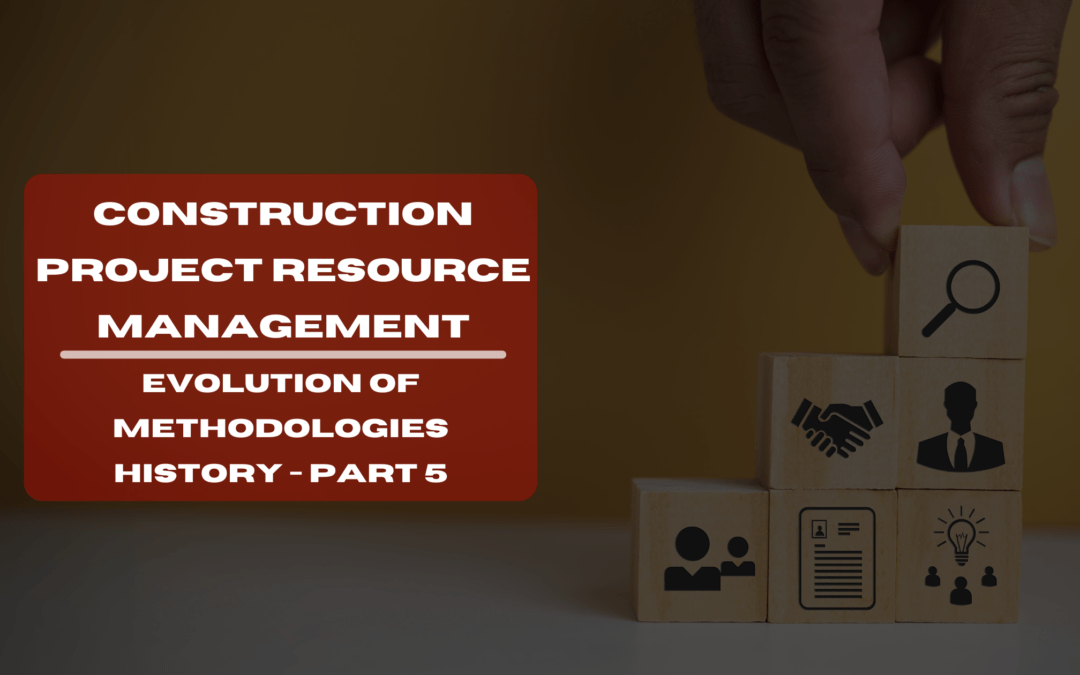Construction Project Resource Management Methodologies: History Part 5
As we conclude our exploration of Construction Project Resource Management, it is essential to reflect on the evolutionary significance of the methodologies and models we’ve discussed. These tools have not only shaped the field but also continue to play a vital role in the construction industry’s success.
If you want to refer to previous parts of this series, you can read them here:
Part 1: Unearthing the Origins of Construction Project Resource Management
Part 2: Construction Project Resource Management Principles and Methodologies
Part 3: Top 8 Challenges in Construction Project Resource Management
Part 4: 6 Models To Assess Requirements In Construction Project Resource Management
Table of Contents
Adaptation to Complexity
Throughout history, construction projects have grown increasingly complex, with diverse resources, interdisciplinary teams, and tight budgets. The resource management models we’ve examined have evolved to address these complexities. From the early days of informal resource allocation to the sophisticated techniques and technologies of today, the field has adapted to meet the demands of modern construction projects.
Efficiency and Productivity
Efficiency and productivity are paramount in the construction industry, and the resource management models we’ve explored contribute significantly to achieving these goals. By optimizing resource allocation, preventing conflicts, and ensuring the right resources are in the right place at the right time, these models have improved project efficiency and productivity.
Risk Mitigation
Construction projects are inherently risky, with numerous variables that can impact resource management. The methodologies discussed in this article offer tools for identifying and mitigating risks associated with resource allocation. This proactive approach helps project managers anticipate and address potential challenges, enhancing project resilience.
Integration and Collaboration
In the past, resource management often operated in isolation from other project management functions. The evolution of resource management has brought about a more integrated approach, emphasizing collaboration between project disciplines. Integrated resource management fosters better communication, coordination, and alignment with project goals.
Technology Integration
The integration of technology, such as BIM and resource management software, has been a game-changer in the construction industry. These tools provide project managers with unprecedented visibility and control over resource allocation. They have become indispensable for modern construction projects, ensuring accuracy, efficiency, and cost-effectiveness.
Sustainability
Sustainability considerations have gained prominence in recent years, and resource management has adapted accordingly. Sustainable resource planning has become a critical aspect of construction projects, aligning resource allocation with environmental goals. This reflects the industry’s commitment to responsible resource management.
Conclusion
The history of Construction Project Resource Management is a story of continuous innovation and improvement. From its humble beginnings to its current state of sophistication, resource management has evolved to meet the ever-changing demands of the construction industry. The methodologies and models discussed in this article represent milestones in this journey.
As professionals and students in the field of Construction Project Resource Management, it is crucial to recognize the importance of adaptability and innovation. The construction industry will continue to evolve, presenting new challenges and opportunities. By embracing the lessons of history and the tools of today, we can navigate these changes and contribute to the successful delivery of construction projects.
In closing, the evolution of resource management in construction projects is a testament to the industry’s resilience and determination to improve. These advances have not only enhanced the efficiency and effectiveness of the construction industry but have also ensured that projects are completed on time and within budget, ultimately benefiting all stakeholders involved.
Thank you for joining us on this journey through the origins, challenges, methodologies, and evolution of Construction Project Resource Management.

